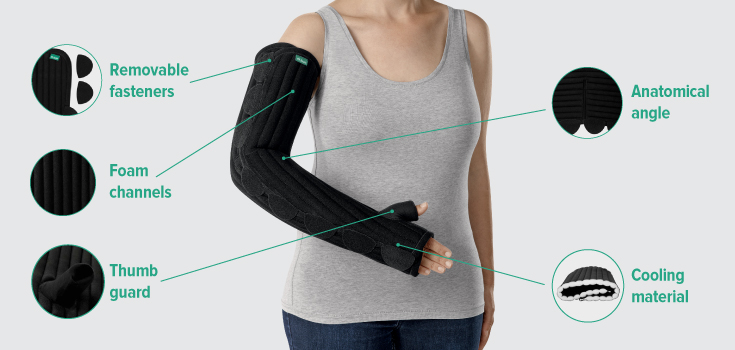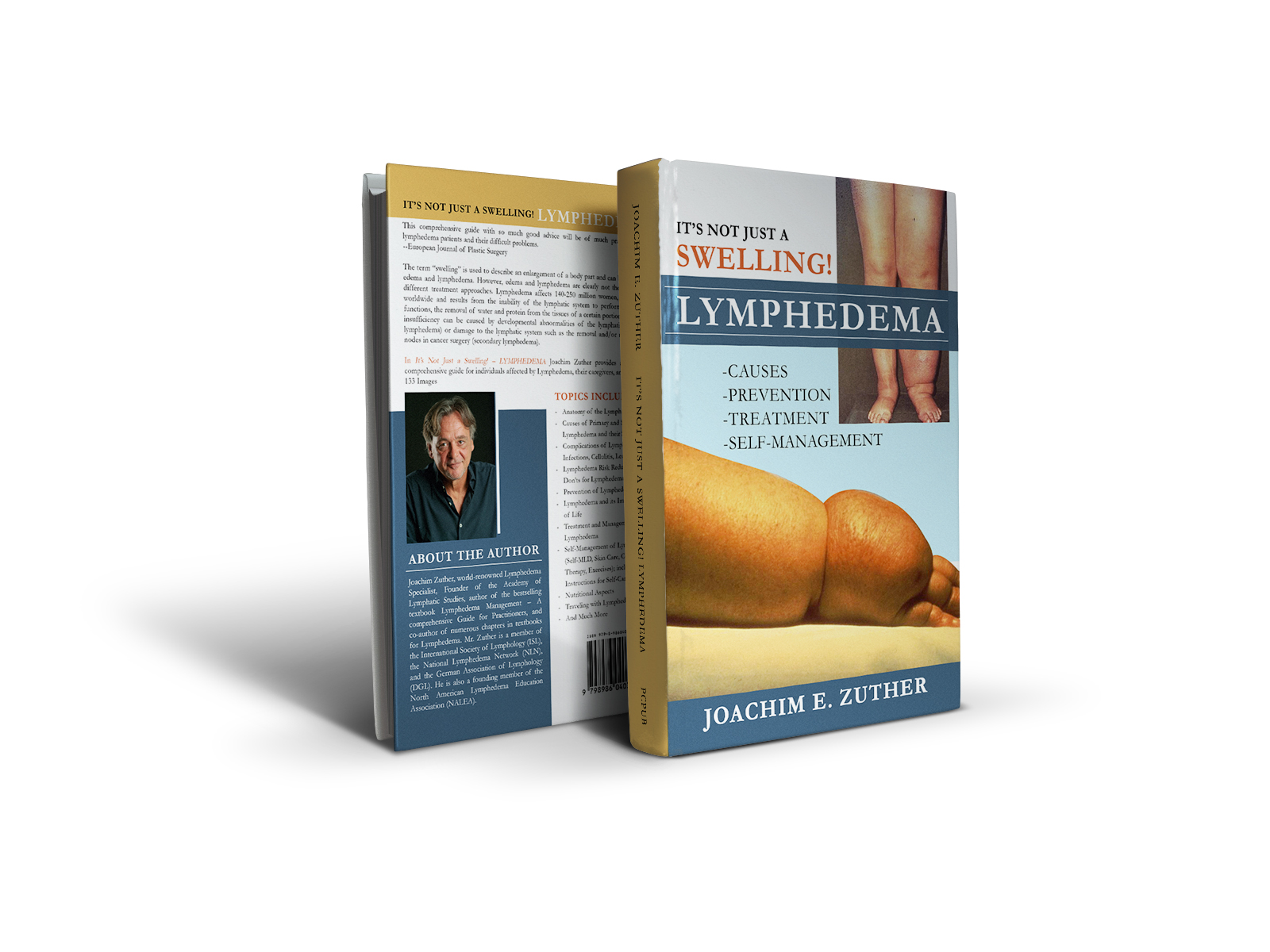Lymphedema is a progressive and chronic condition caused by the disruption or obstruction of normally functioning lymph vessels and/or nodes secondary to surgery involving the lymphatic system, or developmental abnormalities of the lymphatic system itself.
Although the swelling associated with lymphedema can be reduced to a normal or near-normal size by Complete Decongestive Therapy (CDT), the elastic fibers in the skin affected by lymphedema are damaged. These fibers loose their elasticity and have a tendency to harden, especially in long-standing and untreated lymphedema present over a long time period; in these cases, normal skin elasticity may never be regained completely. As a result, the affected extremity is always at risk for re-accumulation of lymph fluid. External support of the affected body part using compression therapy is therefore an essential and integral component of effective lymphedema care, providing the necessary support for those tissues that lost elasticity and compensating for the elastic insufficiency by increasing the tissue pressure.
Compression therapy in the treatment of lymphedema is applied by padded short stretch bandages, compression garments, or alternative materials, such as adjustable compression devices.
While compression in the first, or intensive phase of CDT is applied by padded short-stretch bandages, patients graduate to compression garments once the extremity is decongested to a normal or near-normal size in the second phase of treatment, which is also known as the self-management, or maintenance phase of lymphedema care. The primary goal of compression therapy is to maintain and improve the reduction of the swelling achieved during lymphedema treatments; it is important to understand that compression garments worn in the maintenance phase of CDT are not designed to be worn at nighttime or to further reduce lymphedema and should only be worn on a decongested extremity.
In advanced lymphedema, and/or in cases with relapsing symptoms and lymphedema volume, nighttime compression is an additional option for lymphedema patients to prevent re-accumulation of lymphatic fluid during nighttime rest in the second phase of treatment. Recent observational studies suggest that the addition of nighttime compression results in more favorable long-term control of lymphedema and a significantly reduced risk of lymphedema volume in the affected extremity (1). In cases when nighttime compression is indicated, the patient and/or caregiver are instructed in the application of mild and padded compression bandages on the affected extremity for the night.
Various types of ready-made nighttime compression systems are now available for those patients who are physically unable or unwilling to apply compression bandages for nighttime use.

JUZO Nighttime Lymphedema Garment
Nighttime compression systems should be non-elastic and provide low resting pressure on the extremity, which makes them safe to wear at night. Good systems should be simple to use and be easily adjusted to provide the appropriate and gentle amount of gradient pressure between the lower (higher pressure) and the upper (lower compression) portions of the extremity, thereby assisting in the movement of fluid back to the bloodstream and the heart. In general, these goals are achieved by garment systems containing a foam liner and a series of adjustable straps or fasteners, which are used to adjust compression. Foam liners not only provide padding to protect sensitive pressure points and prevent skin irritation but also wick moisture, thereby reducing sweating; in many cases, foam liners also incorporate channels to promote lymphatic drainage.
The decision for an appropriate nighttime compression system should only be made by trained individuals with a full understanding of the pathology of lymphedema and its related conditions; these individuals can be the certified lymphedema therapist, a trained and certified garment fitter, or the treating physician.
References:
- McNeely, M, Campbell, K, et al. Efficacy of night-time compression for breast cancer related lymphedema (LYNC): protocol for a multi-centre, randomized controlled efficacy trial. BMC Cancer. 2016; 16: 601. Published online 2016 Aug 4. doi: 10.1186/s12885-016-2648-8. https://www.ncbi.nlm.nih.gov/pmc/articles/PMC4973542/
Dear Lymphedema Blog Reader – if you like the contents on this website, please help to keep it going. A great amount of work and research is necessary to provide you with up-to-date information on this site. Your donation supports these efforts and associated administrative costs. Surplus funds will be donated to Lymphedema/Lipedema-related charitable endeavors. Please donate using the “Donate Now” button on the right upper hand of this page – Thank You!
Join Lymphedema Guru, a Facebook page solely dedicated to informing about all things related to lymphedema – news, support groups, treatment centers, and much more


 Joachim Zuther, Lymphedema Specialist.
Joachim Zuther, Lymphedema Specialist. 
